Robert E. Howard’s Prehistoric Beasts: The Terror Bird
Sunday , 4, August 2024 Weird Tales 3 Comments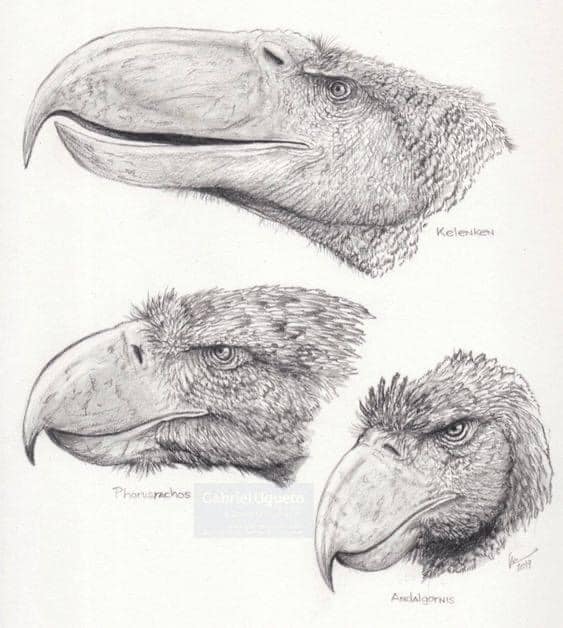 Prehistoric animals appear in Robert E. Howard’s fiction as intrusions of creatures from past eons. They are a way to enhance the strangeness of a situation.
Prehistoric animals appear in Robert E. Howard’s fiction as intrusions of creatures from past eons. They are a way to enhance the strangeness of a situation.
One creature used more than once was the Terror Bird. Terror Bird is a loose term used for predatory flightless birds of the Cenozoic Era. The dinosaur extinction opened the world up for birds, reptiles, and mammals. It would be an arms race on who would dominate. Birds barely made it through the asteroid impact with only two shore bird lineages surviving. Birds radiated filling in any niche including becoming big and flightless.
Where did Robert E. Howard find out about terror birds? R.EH. had H. G. Wells’ The Outline of History. One plate has the Diatryma with this description:
“The Diatryma, a carnivorous bird seven feet tall, with a powerful seventeen-inch jaw, which probably preyed on primitive horses.”

It existed 56-45 million years ago. Edward Drinker Cope discovered the Diatryma in 1874. Gaston Plante discovered fossils in 1855 in France. He named the bird “Gastornis.” It was originally thought to be carnivorous, a crane with almost hair like feathers.
Thoughts have changed about Diatryma/Gastornis. It was heavily built, so it was not fast. The beak was not hooked like predatory birds. It did not have claws for grasping prey. A biomechanical study had a conclusion that Diatryma was an herbivore. Isotope examination of bones show a plant diet. The beak was a giant nut cracker and plant grinder. It is also now classified as being most closely related to ducks and geese, not a Gruiform. So Diatryma is really not the model for Robert E. Howard’s terror birds.
From “The Gods of Bal-Sagoth:
“In form it was like a bird, but such a bird as the rest of the world had not seen for many an age. Some twelve feet high it towered, and its evil head with the wicked red eyes and cruel curved beak and its evil head which was as big as horse’s head. The long arched neck was thicker than a man’s thigh and the huge taloned feet could have gripped the fleeing woman as an eagle grips a sparrow.”
It took Athelstane cutting off a leg and Turlogh putting an ax spike between the eyes to finish it off.
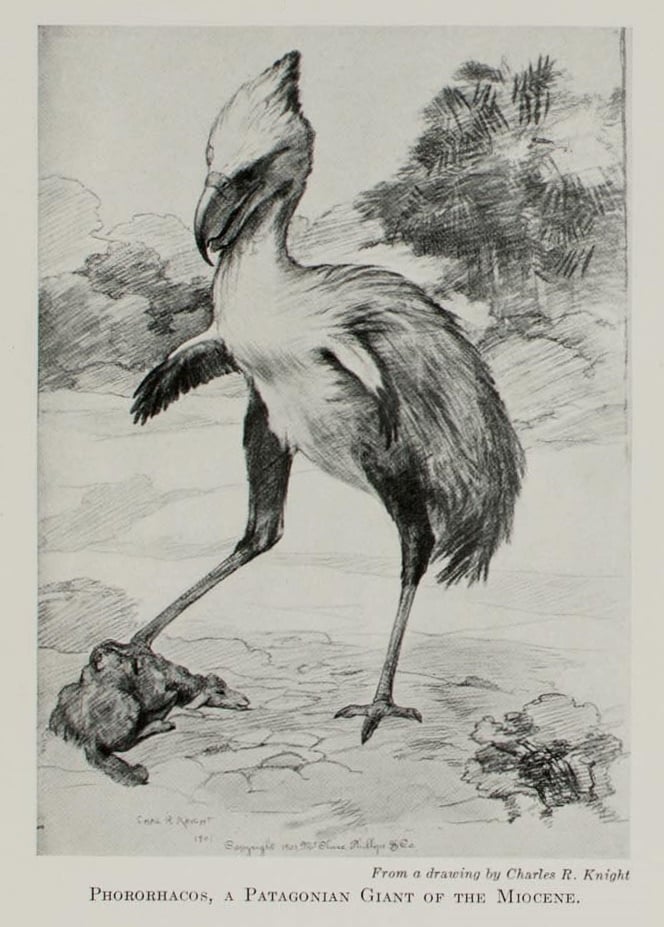
The island of Bal-Sagoth is somewhere in the Atlantic, probably close to the Caribbean. The terror bird was a Phorusrhacos. Phorusrhacids were the true terror birds. They were from South America, which was an island continent until 2.5 million years ago. The mammals were archaic, some marsupials and the hooved notungulates. The apex predators were the gigantic titanoboa, the 34 foot caiman Purussaurus, and the Phorusrhacos. It was originally thought they were Gruiformes but recent genetic studies have reclassified the Phorusracids closer to raptors, parrots, and song birds. They had hooked beaks, claws, and lighter builds in comparison to the Diatryma. They moved into North America 2.5 million years ago when the Panama land bridge formed. Titanis walleri was 8 foot tall, weighed 330 lbs, and estimated to reach a speed of 65 km/h.
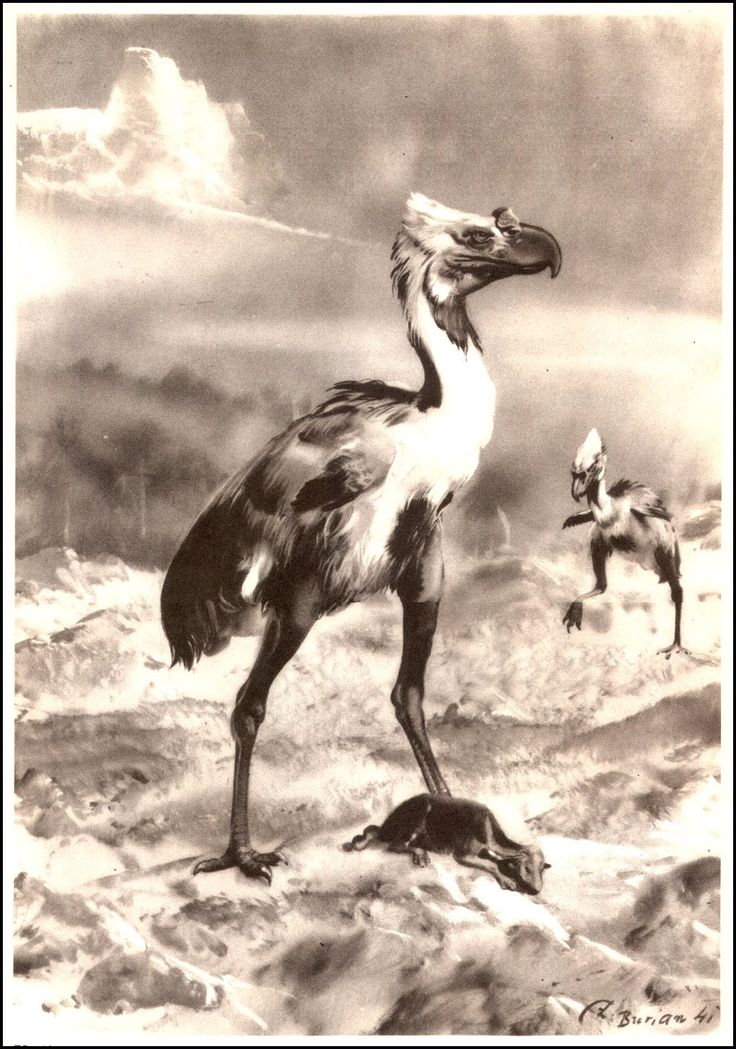
The Kelenken discovered in 1999 was even bigger. So Turlogh and Athelstane took on a Phorusrhacos.
Howard would return to the terror bird in “Almuric.”
“Behind her, gaining with every stride, cam one of those giant carnivorous birds which are among the most dangerous of all the grisly denizens of the grasslands. They tower ten feet in height and somewhat resemble an ostrich except for the beak, which is a huge curving weapon, three feet in length, pointed and edged like a scimitar. A stroke of that beak can slash a man asunder, and the great taloned feet of the monster can tear a human limb from limb.”

Steve Fabian gave the terror bird of Almuric a long beak more in line with a nectar eater. Tim Conrad drew the bird as a Phorusrhacos in the adaptation of “Almuric” in Epic Illustrated.
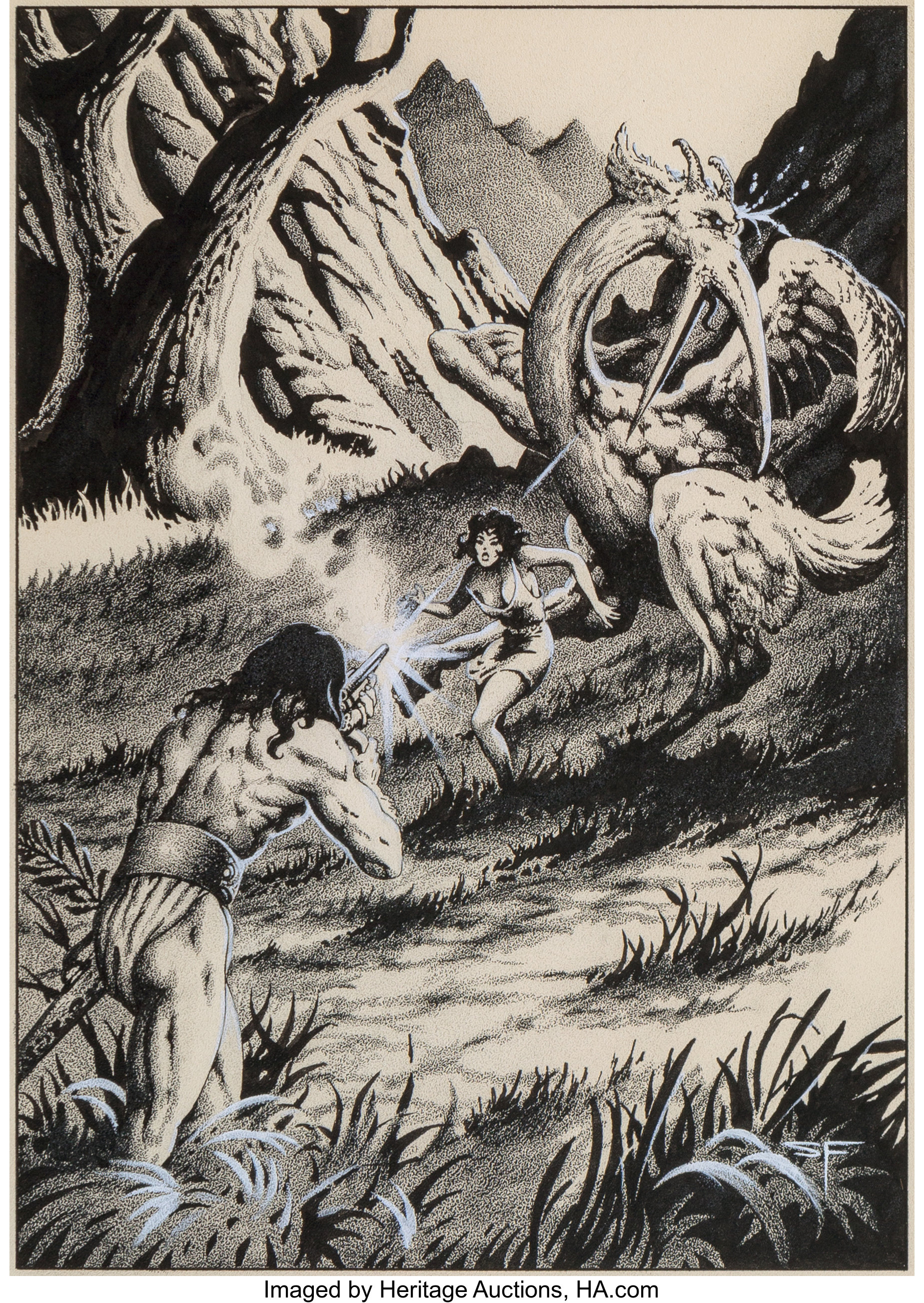
The terror bird fascinated Robert E. Howard (or terrified him) enough to use the beast in two different stories. This would be a pattern.
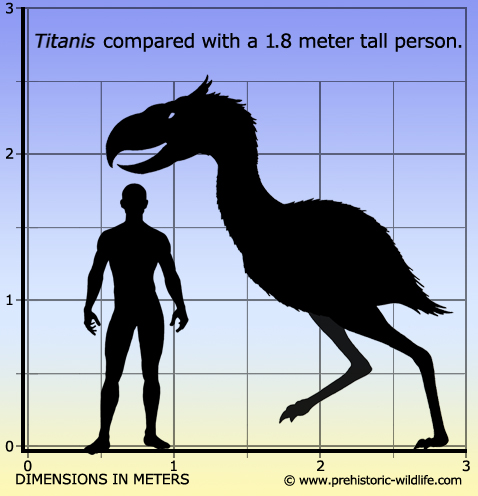
Couldn’t the wizard turned into a bird in the Conan tale Beyond the Black River be considered a “terror bird”?
-
What are you talking about?
That was a swamp demon.